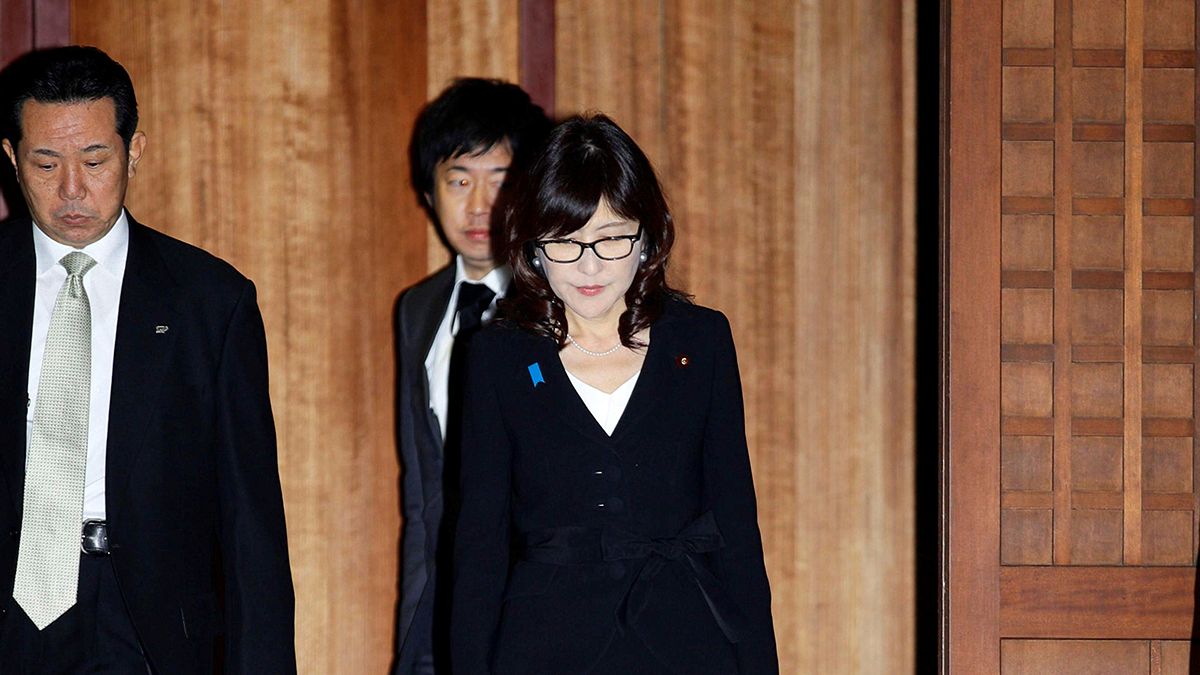Japan's defence minister visits controversial military shrine hours after historic Pearl Harbour ceremony.
On Wednesday Japan’s Defence Minister Tomomi Inada was at Pearl Harbour alongside her prime minister to mark the 75th anniversary of the start of hostilities with America.
It was an historic first simultaneous visit to Hawaii by the two heads of state. In May President Barack Obama became the first US President to visit Horoshima, the site of the first of the two US atomic bomb attacks on Japan that ended WWII.
On returning home Inada went to the Yasukuni military shrine, a religious site that angers many because along with two and a half million soldiers it honours a group of Class A war criminals from WWII.
#Yasukunipic.twitter.com/1PyT8EAsKq
— Giulia Pompili (@giuliapompili) November 12, 2016
South Korea called the visit “deplorable”.
“Regardless of the difference in historical views, or whether they fought as enemies or allies, I believe all counties are able to understand that we wish to express respect and gratitude to those who sacrificed their lives for their countries,” Inada said.
Plus #Japan's def min just went to #Yasukuni shrine: #China Irked By Japan Name Change of De Facto #Taiwan Embassy https://t.co/kjPT9eX7kZpic.twitter.com/YAN0FcC0rN
— Rosalind Mathieson (@RosMathieson) December 29, 2016
August 15th is the normal major commemoration date that angers Japan’s neighbours the most as it marks Japan’s WWII surrender.
Since 2013 Prime Minister Shinzo Abe has stayed away on that day. This was Inada’s first homage since becoming minister in the summer, but she is a regular visitor.
Yasukuni was consecrated in 1869 as the national military shrine for the spirits of the nation’s warriors, but it became more than that when, in 1979, it was discovered that 14 Class A war criminals had been secretly enshrined there the year before.
In addition, the Yūshūkan museum nearby makes little mention of Asian casualties, including civilian deaths in incidents like the Nanking massacre, and firmly places Japan’s military expansionism in the context of a liberation struggle against western imperialism.
South Korea is among the most sensitive to the issues as Japanese ambitions for the peninsular have existed since the 16th century . These ambitions began to be realised in the late 19th century with victories in the First Sino-Japanese and the Russo-Japanese wars. By 1935 Japan controlled Korea, Taiwan, and the southern half of Sakhalin.
China is also affronted by the loss of civilian life, notably in the notorious Nanking massacre during its long 20th century conflict with Japan, beginning with the invasion of Manchuria in 1931.
The new controversy comes the day after the issue of Japan’s wartime “comfort women”, foreign female prisoners-of-war pressed into sexual service for Japan’s troops, is on the front pages again in South Korea.
This is because a group is trying to erect a statue honouring the victims outside the Japanese consulate in the southern city of Busan, a year after the South Korean government said it was removing a similar monument in the capital in a goodwill gesture.
Re: FOCUS TAIWAN:
Taiwan's first '#comfortwomen' museum opens after decade of effort#阿嬤家・和平與女性人權館#アマ記念館#慰安婦https://t.co/wR584F8qGJpic.twitter.com/xj8j3eGuZN— 河内丸(裁判員制度を即時廃止せよ) (@Kawachi_Maru) December 19, 2016
